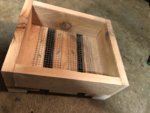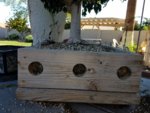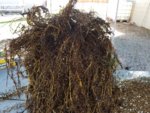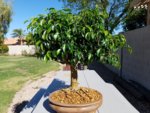coltranem
Chumono
Hi,
I am looking to get two of my trees into grow boxes next spring but I am a little unsure what size to make. I'd love some advice.
Tree 1: Red Maple
This has been growing out for size in a 2 gallon nursery pot. It sits abot 3 feet tall with a 1.25 root base. I'd to get it into a flat grow box to start building a flat root base. My thought on size is 5-6 inch deep and maybe 16 inch square. My target is a two foot tree with approximately 4 inches of base.
Tree 2: Small Juniper
I acquired this tree this summer and it is pretty root bound. I'd like to start getting it more vigorous and start a flatter base. This tree has a 1 inch base which I would like to grow. My size guess here is 3 inch deep 12 inch square.

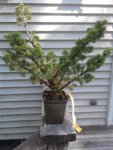
I am looking to get two of my trees into grow boxes next spring but I am a little unsure what size to make. I'd love some advice.
Tree 1: Red Maple
This has been growing out for size in a 2 gallon nursery pot. It sits abot 3 feet tall with a 1.25 root base. I'd to get it into a flat grow box to start building a flat root base. My thought on size is 5-6 inch deep and maybe 16 inch square. My target is a two foot tree with approximately 4 inches of base.
Tree 2: Small Juniper
I acquired this tree this summer and it is pretty root bound. I'd like to start getting it more vigorous and start a flatter base. This tree has a 1 inch base which I would like to grow. My size guess here is 3 inch deep 12 inch square.



